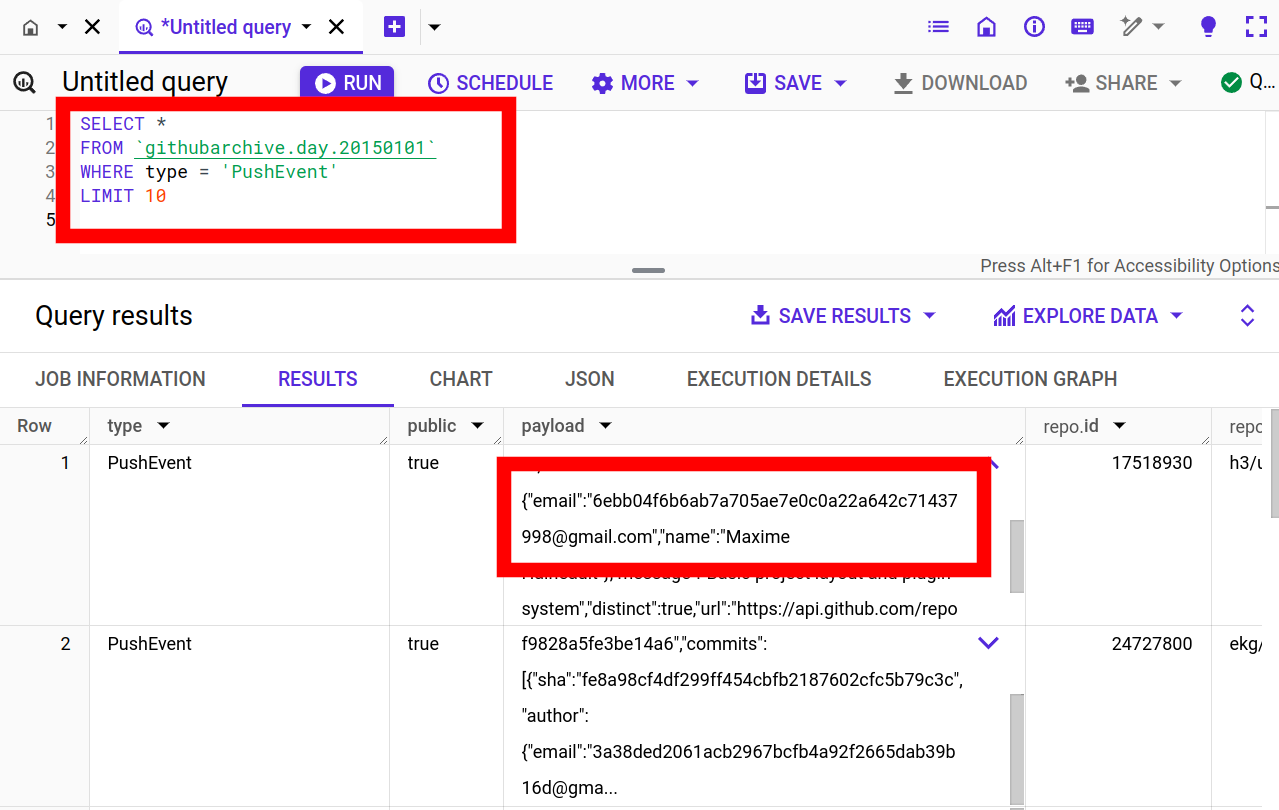- Suck at your job:
- Have bad memory so you have to take notes: Ciro Santilli's bad old event memory
- Be a compulsive knowledge hoarder: Ciro Santilli's knowledge hoarding
- Seek glory over money: Ciro Santilli's selfish desires
- Try to make a carrier out of it: OurBigBook.com
- Be born compassionate: Ciro Santilli's self perceived compassionate personality
- He doesn't actually write that much, but when he does he focuses on higher impact stuff, see remarks about "He doesn't like to refresh the homepage looking for easy reputation" on Section "Ciro Santilli's Stack Overflow contributions"
- Contribute in a place where it is super easy for people to give you upvotes if they like your stuff. This way, you will see the uploads, and that will motivate you to re-read your content and make it more perfect with additions and corrections.
In this project Ciro Santilli extracted (almost) all Git commit emails from GitHub with Google BigQuery! The repo was later taken down by GitHub. Newbs, censoring publicly available data!
Ciro also created a beautifully named variant with one email per commit: github.com/cirosantilli/imagine-all-the-people. True art. It also had the effect of breaking this "what's my first commit tracker": twitter.com/NachoSoto/status/1761873362706698469
GitHub Archive query showing hashed emails
. It was Ciro Santilli that made them hash the emails. They weren't hashed before he published the emails publicly.All GitHub Commit Emails repo before takedown
. Screenshot from archive.is.The "greatest common divisor" of two integers and , denoted is the largest natural number that divides both of the integers.
This is actually pretty good! Makes a small first step into The missing link between basic and advanced.
By the Simons Foundation.
Unfortunately does not use a free license for content.
Videos should be found/made for all of those: videos of all key physics experiments
- speed of light experiment
- basically all experiments listed under Section "Quantum mechanics experiment" such as:
- Davisson-Germer experiment
Quantum Field Theory lecture notes by David Tong (2007) puts it well:This is also mentioned e.g. at Video "The Quantum Experiment that ALMOST broke Locality by The Science Asylum (2019)".
In classical physics, the primary reason for introducing the concept of the field is to construct laws of Nature that are local. The old laws of Coulomb and Newton involve "action at a distance". This means that the force felt by an electron (or planet) changes immediately if a distant proton (or star) moves. This situation is philosophically unsatisfactory. More importantly, it is also experimentally wrong. The field theories of Maxwell and Einstein remedy the situation, with all interactions mediated in a local fashion by the field.
This section is more precisely about classical mechanics.
Our definition of "film" is a broad one, including any moving picture, of any length, animated or not.
Official Command-line interface to convert a directory of OurBigBook Markup files into a static website. See also: cirosantilli.com/ourbigbook/ourbigbook-cli
www.youtube.com/watch?v=H_H_TF5Kxks This Lab is RIDICULOUS (2021) gives an overview of their new laboratory, and hints of the types of projects they want to carry out.
There are unlisted articles, also show them or only show them.


